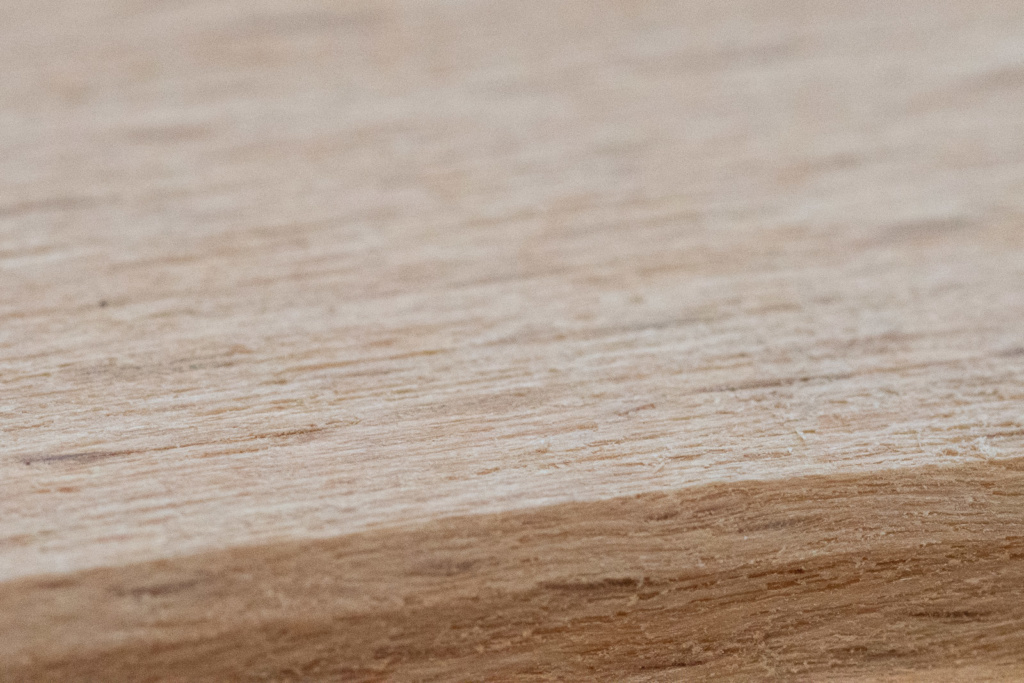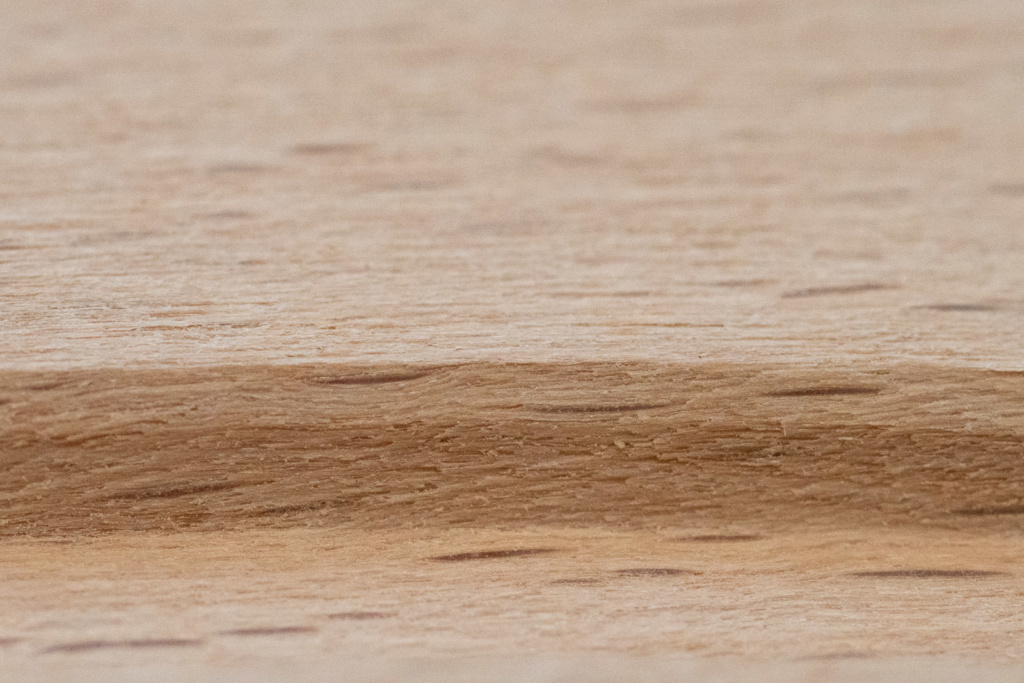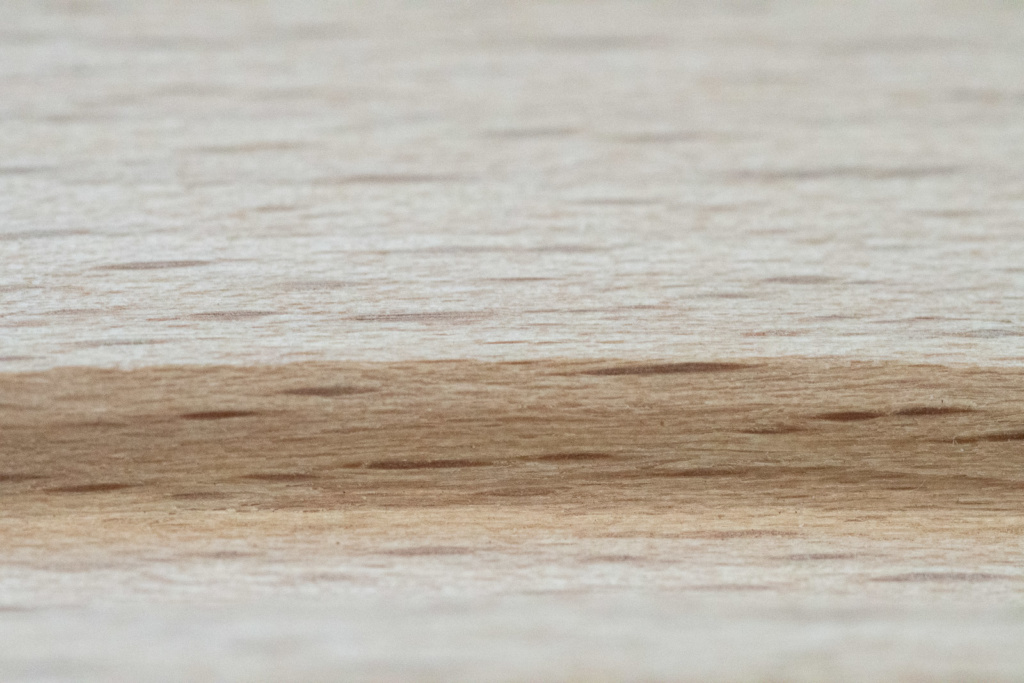The last couple of new BRIO products I’ve purchased have come with track that has a very rough finish. This has never happened before, and that I’ve seen it in two products is a little concerning. BRIO track is normally sanded very smooth and coated with a light finish, but these pieces obviously did not receive that treatment. It was most noticeable in the #33627 Travel Station Set.
I have heard from one other person that has noticed the same problem, in their case with the #33699 Curved Bridge.
I’ve attached photos. The first two show the rough track at a fairly high magnification. Notice the rough, uneven surface around the track bevel.
The third shows “typical” track. Note how smooth the surface is in comparison.
I reported this to BRIO as a potential safety issue via their web site as I can imagine a toddler getting small splinters from pieces like this. BRIO got back to me within a few days and requested photos, so I sent them the above.
I’ll update this article once I hear from them again.
Update 12/11/18
BRIO has said they will send me a replacement #33627 Travel Station Set, but have not provided an explanation for the poor quality track.
Update 12/12/18
Here’s the latest response from one of BRIO’s customer service managers:
Hi John,
I’ve let our product department know, this was a defective item.
Thank you
Update 1/28/19
I did receive track from BRIO (not a full set, just loose track) in mid-January. This track did have the smooth finish I am used to seeing from BRIO, but given that it was sent to me as a loose collection does leave me without a clear answer to what’s going on. BRIO claims that it was a production defect, but it’s obviously widespread if so. But I am skeptical. This still looks like cost-cutting by the manufacturer, or at best, inadequate quality control.



This isn’t anything new, I’m afraid. Thomas & Friends did the same thing with their track system a long time ago; leaving it unsanded and rough instead of smooth all the way around. Apparently it’s cheaper.
Yeah, that’s my fear: cost-cutting resulting in poor quality track. BRIO is sending me a new set, but I am not hopeful that anything will be different.
Is it possible that Brio has quit manufacturing in the US (if they ever did) to increase profits? I have found that offshore production has a real hit or miss quality control. I read someone was dissatisfied with the quality of the machines that punched out the track. I am not sure that a punch die would ever make a nice cut without crushing the wood. It really needs to be milled.
BRIO moved manufacturing from Sweden to China back in the late 1990’s. Quality didn’t really drop too much when that happened, so this seems to be a new development.
Spent hundreds on Brio for Grandson, some parts have questionable quality control and hence poor finish. Typical of a good brand named product loosing its standard. Shame!
I reported my concerns with their quality control here:
https://www.brio.us/customer-services/CustomerServiceUS/questions-and-answers/customer-service
I suggest others do the same. It may not make a difference, but if people don’t speak up then it definitely won’t.
I recently started buying Brio for my 2.5 year old son and have noticed two types of tracks as well… I don’t know what Brio tracks should feel like… but one type is extremely smooth. When holding them it’s almost as if I can’t believe they’re pieces of wood, they feel like plastic so hard and smooth. Laser-cut it seems like. The other pieces are generally lighter looking with a rougher finish… they feel like wood.
Don’t get me wrong, I like the perfectly machined super-smooth hard-feeling ones better.
Also… recently I bought an expansion pack and some rails were defective. I tweeted about it first
https://twitter.com/Yiroon/status/1084215781301338113
and then wrote a complaint on the Dutch http://www.brio.co.nl website (Even though I’m Belgian)
I got an email back very quickly and they sent me a pack of Large Curved Tracks and Short Curved Tracks that I received the same week even. So that was great customer service.
I know that Brio got sold to Ravensburger in 2015… Might that have something to do with the loss of quality?
I recently joined the r/BRIO reddit group as well, looking for a community. But it seems like you’ve got everything covered here already. 🙂
As an aside… I think it’s a pity Brio stopped selling so many of their different tracks. Maybe also a side-effect of Ravensburger after buying Brio only focussing on the tracks that sell most? It might be too expensive to keep making the more exotic pieces. Basically, all we get now are (Mechanical) Curved Switching Tracks. It almost feels as if I started with Brio 20 years too late.
BRIO track should be smooth. Dating back to the 1950’s it has always been sanded to eliminate surface roughness and reduce the chances of getting splinters. So what people are seeing now is pretty new, and a disappointing change.
The drop in quality is almost certainly either cost-cutting or poor quality control. That you’ve seen defective tracks is a good argument for the latter. But, that can be a result of cost-cutting, too. At least they are responsive. 🙂 (Note that even “the old BRIO” had manufacturing issues. I have a lot of double-curve/EE track that doesn’t fit together because the pegs were drilled off-center).
This could all be related to the new ownership, but it’s hard to say whether or not BRIO would have continued down this path, anyway. They have a lot more competition today than they did in the early 2000’s and people are willing to buy cheap track and cheap trains. The rise in popularity of the Melissa & Doug sets in the U.S. is a good example of that. They are supplanting BRIO in retail stores here.
BRIO has changed the emphasis on their lineup from individual track packs to bundles and sets. That’s been going on for the last ten or fifteen years. It’s easier on retailers to have a smaller lineup of products that are easier to sell, and individual track packs are expensive and competing with cheap, bulk track from off brands. So, I understand why they do it. It does make it harder to find specialty track, though, and buyers end up with a glut of track they don’t need (namely, lots of E curves).